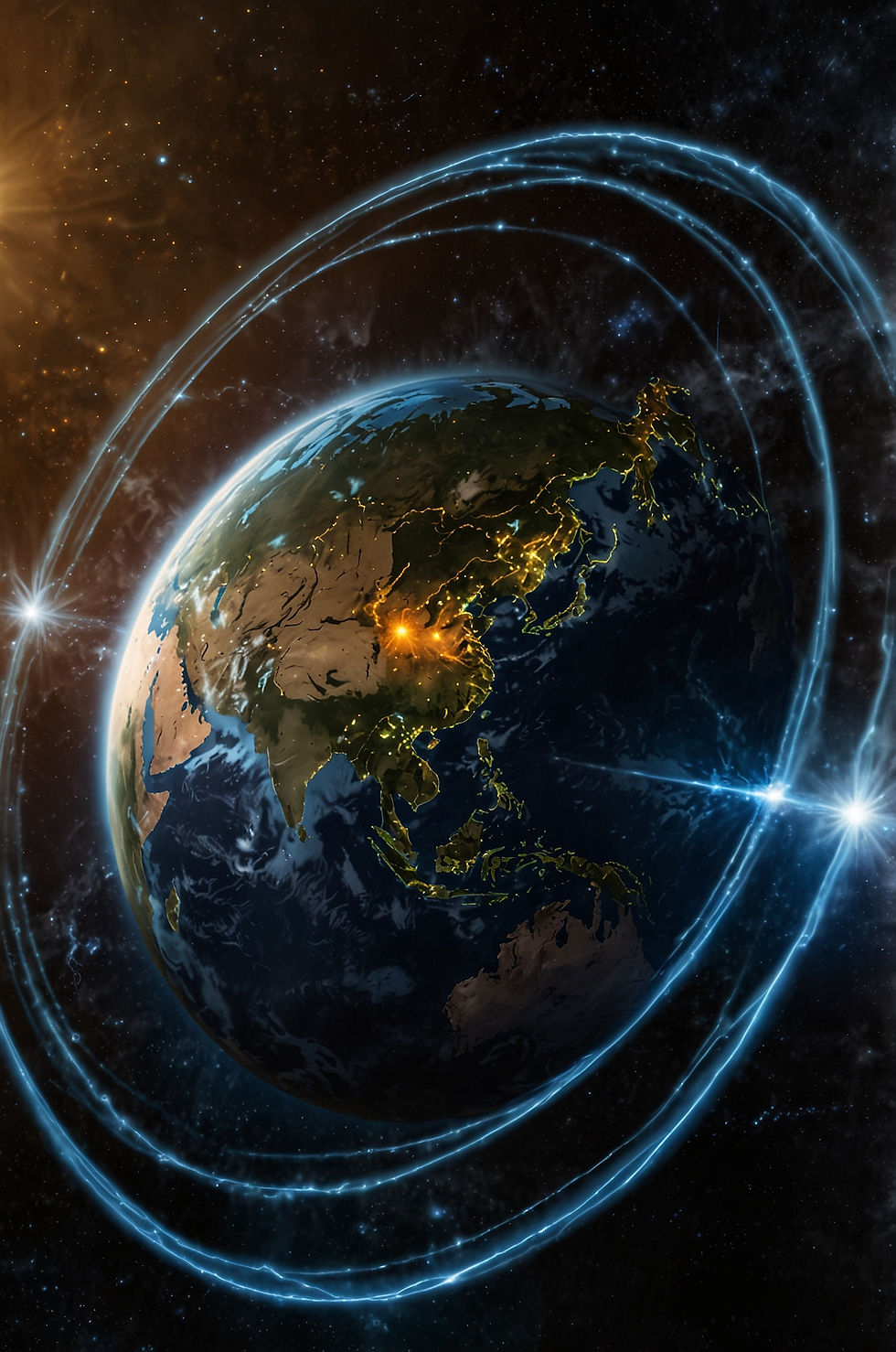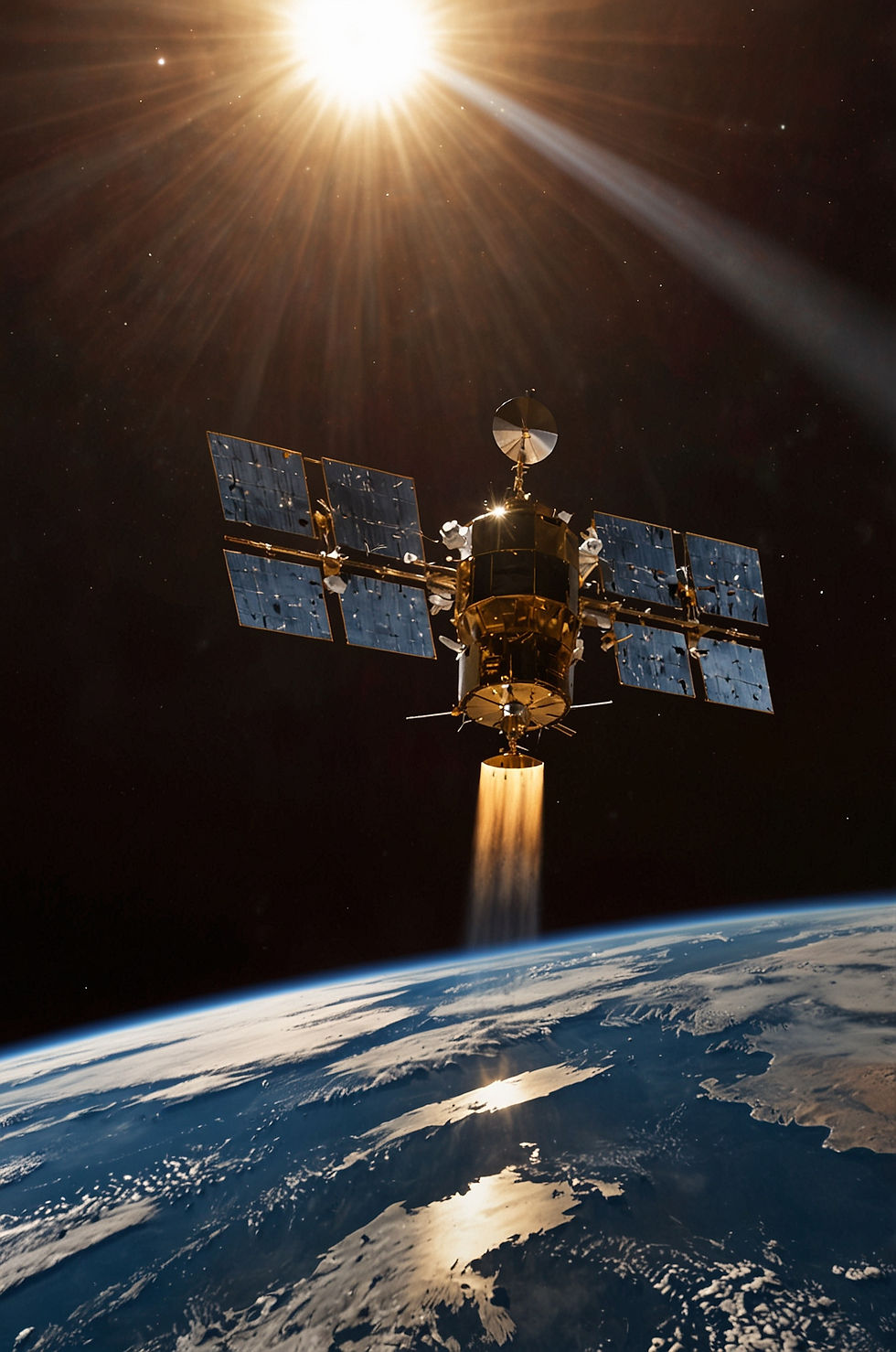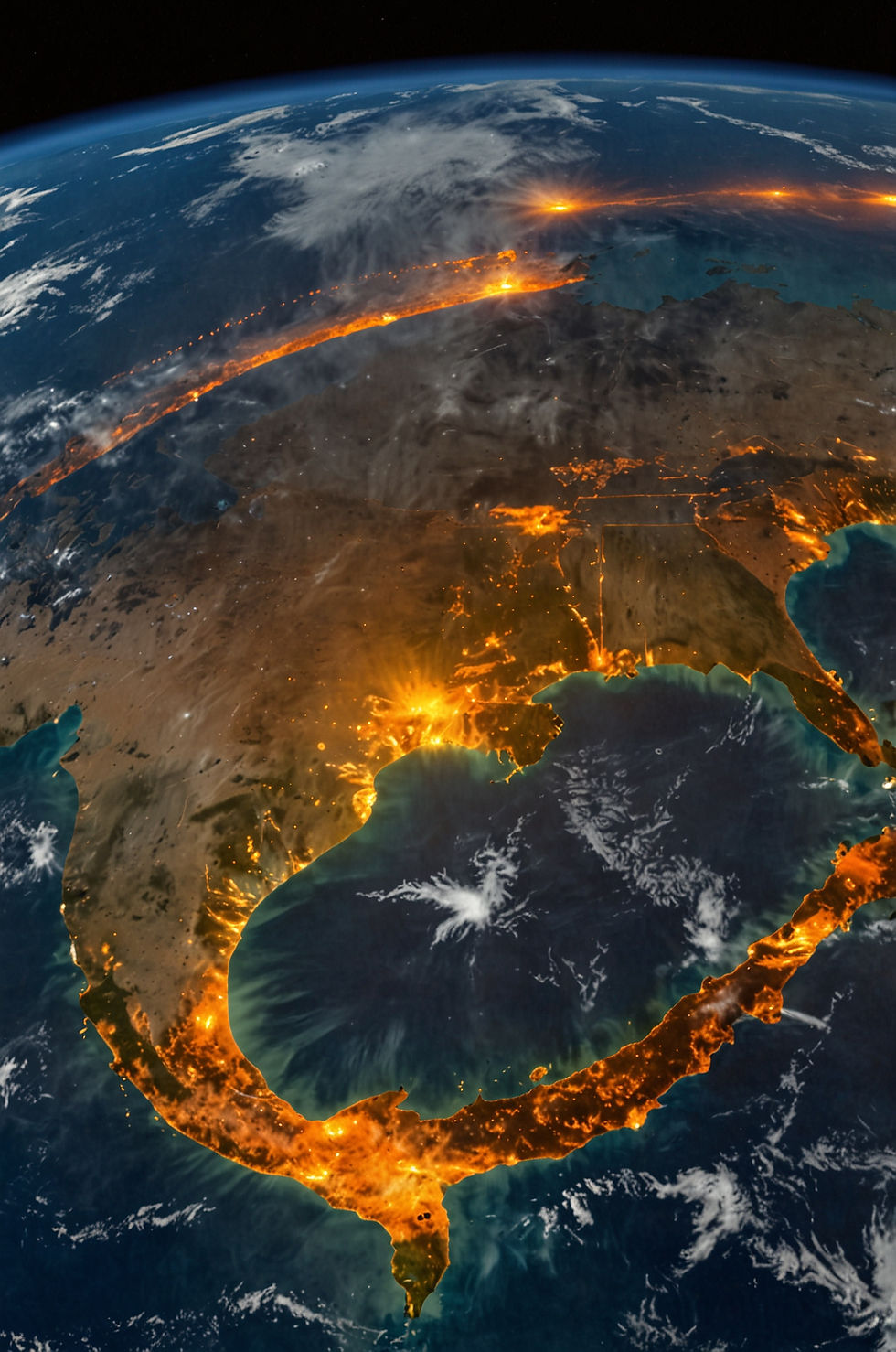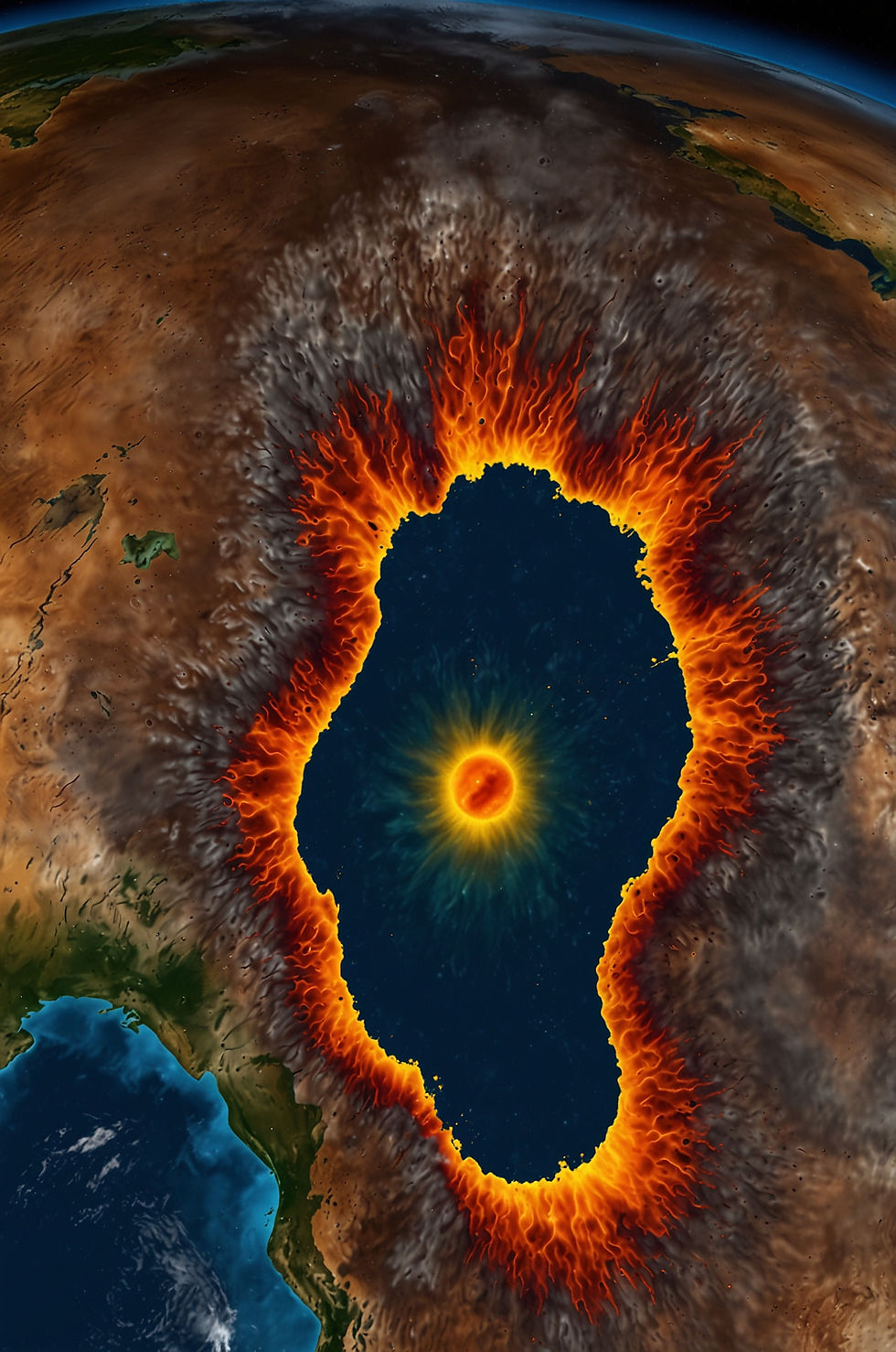Weakening Magnetic Field
- AI it News

- May 6
- 4 min read
There’s a “Dent” in Earth’s Magnetic Field—and It’s Growing

Our planet is enveloped by an invisible yet vital force field – the magnetic field. This shield protects us from harmful solar radiation and cosmic particles, making life on Earth possible. However, this shield isn't uniform. Over South America and parts of Africa, a mysterious phenomenon exists: a significant weakening of this magnetic field. Scientists call it the South Atlantic Anomaly (SAA), a vast zone where the magnetic field dips unusually low, creating a veritable "dent" in our planet's protective armor.
This "dent" in Earth's magnetic field, while not posing an immediate threat to life on Earth's surface, has significant implications for satellites and spacecraft orbiting our planet. The weakening allows charged solar particles to penetrate closer to the Earth's surface, leading to disruptions and damage to sensitive electronic equipment.
The Trouble with the "Dent": Impacts on Technology

The SAA isn't just a scientific curiosity; it's a real problem for space-based technology. The weakened magnetic field in this region allows charged particles from the sun to penetrate deeper into the atmosphere. These particles can:
Disrupt satellite electronics: High-energy particles can cause single-event upsets (SEUs) in computer chips, leading to errors, data corruption, and system failures.
Scramble data: The increased radiation levels can interfere with data transmission and storage, leading to loss of vital information.
Damage sensitive instruments: Prolonged exposure to radiation can degrade and permanently damage sensitive instruments onboard satellites and spacecraft, shortening their lifespan and impacting their mission objectives.
Even the International Space Station (ISS), a marvel of human engineering, isn't immune. When passing through the SAA, the ISS has to power down critical systems to protect them from the effects of the increased radiation. This operational constraint highlights the severity of the problem and the constant vigilance required to mitigate its impact.
As stated by NASA:
"Satellites passing through the SAA may experience technical malfunctions caused by the elevated levels of radiation. This can lead to data loss or component damage, requiring operators to take protective measures."
Unraveling the Mystery: The Deep Earth Connection

So, what's causing this "dent" in Earth's magnetic field? The answer, as with many complex geological phenomena, lies deep beneath our feet. Scientists believe that the SAA is linked to a unique feature in Earth's mantle known as the African Large Low Shear Velocity Province (LLSVP).
The LLSVP is a vast, dense region located deep within the mantle beneath the African continent. Its unique composition and structure are thought to influence the flow of molten iron in Earth's outer core, where the planet's magnetic field is generated through a process called the geodynamo.
Here's how the LLSVP is believed to be involved:
Distortion of magnetic field lines: The LLSVP's density and structure likely distort the flow of molten iron in the outer core. This distortion, in turn, affects the magnetic field lines, causing them to weaken in the region above the LLSVP, resulting in the SAA.
Disruption of geodynamo process: The LLSVP may also disrupt the geodynamo process itself. The flow of molten iron in the outer core is complex and chaotic, and the LLSVP could be interfering with the organized convection currents that sustain the magnetic field.
A Growing Dent: Shifting and Splitting

Adding another layer of complexity, the SAA isn't static. It's not only weakening but also drifting westward and, more surprisingly, splitting into two distinct zones. This dynamic behavior further complicates the understanding of the phenomenon and its potential future impacts.
The westward drift of the SAA has been observed for decades, but the recent splitting into two lobes is a relatively new development. This split suggests that the underlying processes driving the SAA are becoming more complex and potentially more unstable.
The reasons behind the splitting are still under investigation, but some theories suggest it's related to changes in the flow patterns within the Earth's core or to the interaction between the core and the mantle.
A Natural Cycle? Echoes from the Past
Intriguingly, evidence suggests that the SAA might be part of a natural magnetic cycle that has been occurring for millions of years. Studies of ancient rocks have revealed similar patterns of magnetic field weakening in the same general region, dating back over 11 million years.
This suggests that the SAA is not necessarily a sign of imminent magnetic field reversal, a dramatic event in which the Earth's magnetic poles flip. While magnetic reversals have occurred numerous times throughout Earth's history, the SAA seems to be a more localized and recurring phenomenon.
Understanding the long-term behavior of the SAA is crucial for predicting its future evolution and mitigating its impact on technology. By studying the geological record and developing sophisticated computer models, scientists hope to gain a better grasp of the processes driving the SAA and its place within Earth's magnetic history.
The Future of the "Dent": Monitoring and Mitigation
While the SAA doesn't pose a direct threat to human life on Earth, its impact on technology is undeniable. As we become increasingly reliant on satellites for communication, navigation, and scientific research, it's crucial to monitor the SAA and develop strategies to mitigate its effects.
Here are some key areas of focus:
Continuous monitoring: Scientists are using satellites, ground-based observatories, and computer models to continuously monitor the SAA's evolution, tracking its position, intensity, and structure.
Satellite hardening: Developing more radiation-hardened electronics for satellites and spacecraft can help them withstand the increased radiation levels in the SAA.
Operational adjustments: Adjusting satellite orbits and operational procedures to minimize time spent in the SAA can reduce the risk of damage and data loss.
Improved modeling: Refining computer models of the geodynamo and the Earth's mantle can help predict the future behavior of the SAA and its potential impacts.
There's still much to learn about the SAA. However, by continuing to investigate this intriguing anomaly, we can better protect our technology and gain a deeper understanding of the complex processes that shape our planet.
The South Atlantic Anomaly serves as a potent reminder of the dynamic and interconnected nature of our planet. It highlights the importance of continued research into the Earth's interior and the need to protect our valuable space-based assets from the challenges posed by our planet's own magnetic field.




Comments